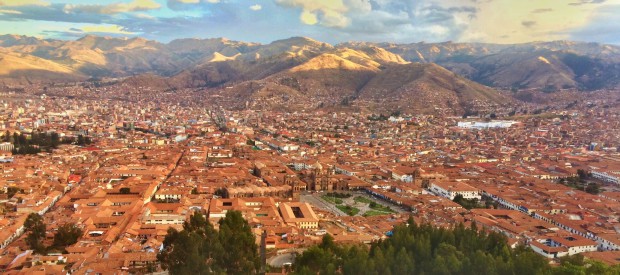
This page is also available in:
 English
English
Bienvenido al Cusco!
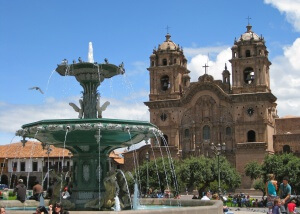
Cusco significa «ombligo del mundo» en nuestra lengua ancestral quechua o runasimi. Cusco fue la capital cultural y religiosa del universo inca. Hoy es conocida como la «capital histórica del Perú» y es la ciudad continuamente poblada más antigua de América del Sur. Se encuentra sobre un lecho fluvial seco a 3.400 m s. n. m. (11.200 pies) en la sierra suroriental a 1.100 km de Lima. Tiene una temperatura promedio de 14 °C. Es el principal destino turístico en Perú y uno de los diez principales destinos a nivel mundial. Tiene una población de aproximadamente 350.000 personas, número que se ha triplicado en los últimos 20 años.
Esta antigua ciudad y sus alrededores ofrecen una gran variedad de experiencias, algo no superado por ninguna otra ciudad de Sudamérica. Es una ciudad fascinante y vibrante cuyos principales atractivos son su cultura, historia, cocina, sitios arqueológicos, actividades de aventura, compras, entre otros. En Cusco y sus zonas aledañas podrá explorar sitios que pertenecen a tres diferentes eras: sitios preincas, sitios incas y construcciones coloniales españolas (en algunos casos, verá estos tres estilos combinados en una sola edificación).
Además del turismo cultural, la región de Cusco le da la oportunidad de gozar de su belleza natural con increíbles paisajes campestres y ríos. Un corto viaje fuera de la ciudad le llevará al corazón de los Andes, donde podrá hacer caminatas, montar a caballo o simplemente pasear a su gusto.
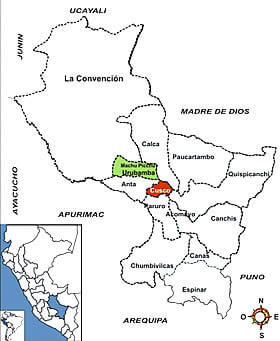
How to get here:
Flying: We think flying to Cusco is the most recommendable way of getting to Cusco. The Lima – Cusco flight is an hour. Airlines that operate flights from Lima to Cusco include Lan Peru, Star Peru, Peruvian Airlines, and Avianca. We recommend Lan. International carriers like KLM, American Airlines, LAN and others have code share agreements so you can book and fly from your home city to Cusco on the same ticket, which is recommendable in case of delayed flights.
Cusco’s Alejandro Velasco Astete’s airport is located about 15 minutes outside the center of Cusco. There are currently no direct international flights to Cusco with the exception of some flights from La Paz in Bolivia, so you will most likely have to make some sort of transit stop in Lima, Peru’s capital before flying on to Cusco (or to any destinations within Peru, and upon return to any of Lima’s 29 international destinations).
The same airlines also offer flights to Puerto Maldonado and Arequipa if you plan on visiting other parts of Peru during your trip.
Cusco airport is small but does have Internet access, a few basic cafes, souvenir shops and a VIP lounge.
Driving:
By bus: The bus ride from Lima to Cusco is 20 hours long on a winding and steep road, with extreme high points as you go through the mountain passes. If you are a nervous traveller and don’t like heights and driving along the edge of ravines this is NOT the way to get to Cusco! If you choose to get to Cusco by bus there are several bus companies; we recommend the following:
- Cruz del Sur – One of the most highly regarded bus companies in Peru. They offer economy and first class service on their comfortable double-decker buses from Lima to Cusco.
- Ormeno
By Rental Car: If you have time and are adventurous you can rent a car when you arrive in Lima and spend a few days driving through the incredible countryside of Peru to get to Cusco. Possible routes include Lima – Ica – Arequipa – Cusco. Be warned that driving in Peru is crazy, and the roads to Cusco are winding with intense drop offs! We do not recommend this option, but for your consideration the main rental car companies in Peru are Hertz, Avis and Budget Car Hire.
Facilities:
Banks – You can find banks in Cusco, mainly on the main street (Avenida del Sol). ATMs from which you can withdraw cash with Visa or MasterCard are readily available in Cusco, as well as the small towns of the Sacred Valley and in Machu Picchu. A lot of hotels and restaurants also accept payment with Visa, MasterCard or American Express, but may charge a small percentage.
Money/Traveller’s Cheque Exchange
We recommend bringing some cash, and getting more upon arrival using ATM machines, found all over Cusco and the Sacred Valley. Make sure you have your PIN number, as dealing with these issues in Cusco is time consuming. Also you may want to inform your bank and credit card company that you will be travelling to Peru. It is best to change money at official money exchanges (Casa de Cambio) rather than banks for a better exchange rate. There are many places to change your money (dollars) into soles in Cusco near the main plaza, and also in the smaller towns in the Sacred Valley, for a slightly lower rate. Traveller’s checks are more difficult to exchange, and not recommendable. Please note that dollars need to be in perfect condition to be accepted; ripped or worn bills will not be exchanged, and if accepted, it will be for a much lower exchange rate.
You can also change Euros or English pounds although sometimes the rates are not very good.
Accommodation
Cusco offers a wide selection of hotels, ranging from budget hostels, to mid range to five star luxury hotels. We are happy to make recommendations to help you select the right type of accommodation for your stay, from a selection of mid range hotels similar to Pisac Inn, or other categories.
Food and Drink
Peruvian Cuisine is renown worldwide, and in Cusco there are many local, tourist, and fine dining restaurants to explore. We suggest you try the typical dishes of Peru, as well as the booming gourmet Novo Andean cuisine. Don’t miss the delicious grilled-guinea pig, which is a local delicacy, or ceviche which is raw fish cooked in lemon. For a local flavor of Peruvian fast food try pollo a la brasa, chicken grilled in a firewood oven, served with French fries. There are plenty of pizza and pasta restaurants as well.
Popular drinks here are coca tea made from the coca leaf, Inca Kola (soft drink made with lemon grass – only found in Peru!), Pisco Sour (a mix of Pisco, egg whites, lemon, sugar, cinnamon and ice) and chicha (alcoholic drink made from corn).
Shopping
Apart from the colorful local markets and stores filled with beautiful handmade crafts and goods; in Cusco you will find unique boutiques offering high quality alpaca, and exquisite vicuña in contemporary designs. Also, a great variety of hand-made textiles can be found in Cusco, though you can buy textiles directly from the weavers in the market towns, such as Pisac. Other popular gifts are beautiful ceramic works and gold and silver jewelry. Most of the best shops are located around the main square (Plaza de Armas) in Cusco.
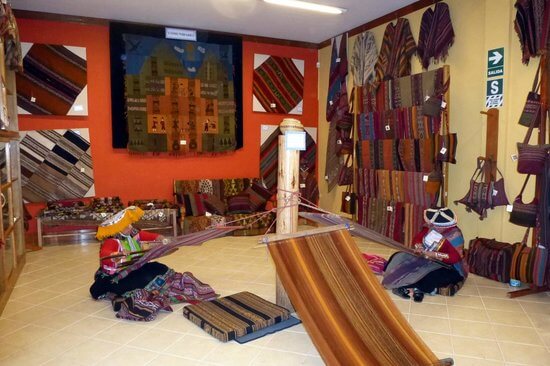
Población
Cusco tiene 304.152 habitantes y en todo el departamento hay 1.158.142 habitantes. Cusco es la séptima ciudad más grande del Perú.
División administrativa
Cusco tiene un área total de 71.891,97 km2 y se divide en 13 provincias: Acomayo, Anta, Calca, Canas, Canchis, Chumbivilcas, Cusco, Espinar, Paucartambo, La Convención, Paruro, Quispicanchi y Urubamba. La ciudad tiene 8 distritos: Ccorca, Cusco, Poroy, San Jerónimo, San Sebastián, Saylla, Wanchaq y Santiago.
Idioma
La lengua nativa de los Andes es el quechua, conocido como runasimi. En Perú, los idiomas oficiales son el español y el quechua. En las zonas rurales de Cusco, la lengua predominante es el quechua. Una parte de la población de Cusco es bilingüe, ya que el quechua es su lengua materna y han aprendido el español. Un pequeño porcentaje de la población habla aimara y existen además otras lenguas amazónicas (ej. Machiguenga) en la selva del departamento.
Religión
Según las estadísticas oficiales, 80% de la población es católica romana; sin embargo, la población indígena todavía practica sus celebraciones y rituales ancestrales. Estas celebraciones andinas mantienen un marcado enfoque precolombino de la vida. Todavía se practica una profunda espiritualidad, si bien no está reconocida como una religión oficial. En esta zona de Cusco, las comunidades tradicionales mantienen una conexión de afecto con las entidades presentes en la pacha (espacio-tiempo), venerada como la esencia cósmica de la vida; mantienen valores basados en la reciprocidad y el respeto por toda la humanidad.
Altitude
Cusco is approximately 3, 400 m (11, 200 ft.) above level sea, and is considered one of the highest cities in the world.
Weather & Climate
Peru’s seasons are the reverse of those in the northern hemisphere. The climate of Cusco roughly falls into two rather distinctive periods, the dry season from May to November, and the rainy season from December to April . In the dry season temperatures reach 19.5°C (67.1°F) by day, and on average fall to 0.8°C (33.4°F) overnight. During these months, the days are usually hot and sunny and the nights are cold, particularly in June and July. During the rainy season the average high temperature is 19.5°C (67°F) and average low temperature is 6.6°C (43.8°F). Annual average temperatures hover around 11ºC (52ºF), dipping below 0ºC (32ºF) in July and hitting 20ºC (68ºF) in summer. External Links: Weather for Cusco & Cusco Weather and Climate

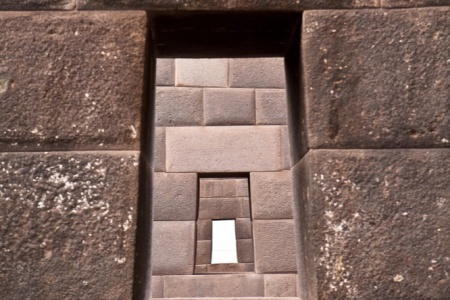
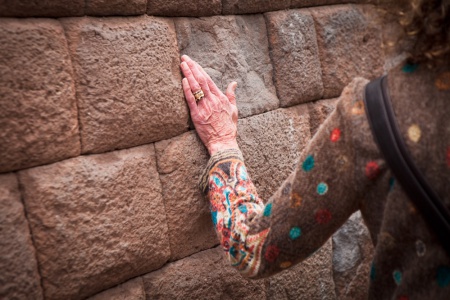






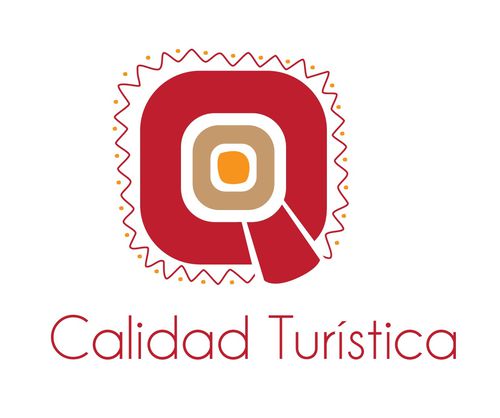
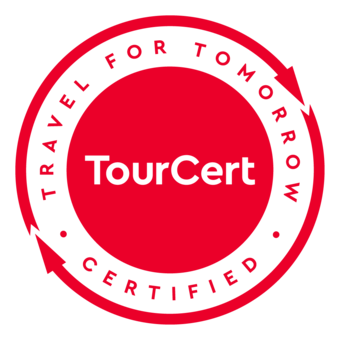
Leave a Comment